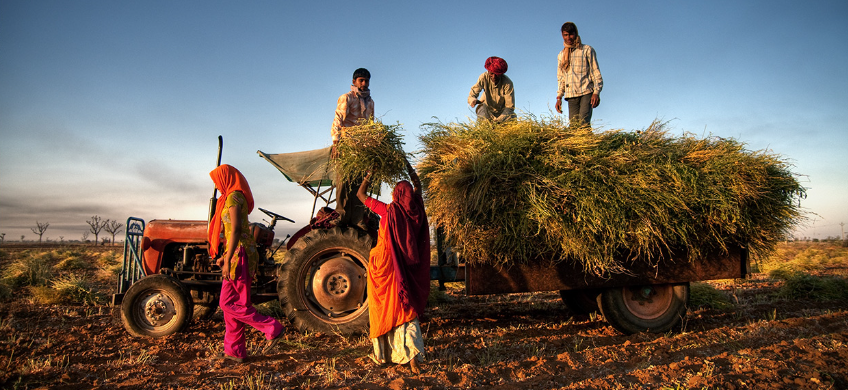India is a diverse country, and has a rich history of agriculture that stretches back thousands of years. Today, agriculture is a major contributor to India’s economy. It provides employment and income for millions of people and supporting the country’s growing population.
The diversity of Indian agriculture reflectsin the wide range of crops and regions involved in farming. Lands all over India are cultivated with the help of a cultivator or manual methods. In this article, we will explore the diversity of Indian agriculture.
Regional diversity in Indian agriculture
The Gangetic Valley
This region, located in the northern part of the country, has fertile soils and abundant water resources. It is a major producer of rice, wheat, and other grains, vegetables, fruits, and flowers.
The Deccan Plateau
Characterized by dry, rocky soils and a hot, dry climate, this region is located in central and southern India . Furthermore, it is a major producer of crops such as sorghum, millet, and pulses. Oilseeds such as groundnuts and sesame grow here as well.
The Western Ghats
This region, located in western India, is known for its hilly terrain and wet, tropical climate. It is a major producer of rice, bananas, and other tropical crops, as well as various spices and aromatic plants.
The Eastern Ghats
This region, located in eastern India, is characterized by dry, rocky soils and a warm, humid climate. It is a major producer of crops such as rice, sugarcane, and pulses.
Indian Crops: An Overview of Major Crops in India
Agriculture is a vital sector of the Indian economy, supporting millions and contributing a significant portion of the country’s GDP. Moreover, a wide range of crops grown in India reflects the country’s diverse climate, soils, and natural resources. The farms are tilled with a power tiller to make them suited for growing crops. Some of the major crops grown in India include:
Rice
In the Gangetic Valley and several other parts of the country, farmers grow rice as the primary staple food, as the region has fertile soils and abundant water. Also, India is the world’s second-largest producer of rice, after China, and grain is a major contributor to the country’s agricultural economy.
Wheat
Farmers in many parts of the country, particularly in the northern and central regions, grow wheat as another major grain crop. India is the world’s second-largest wheat producer, after China, and grain is a vital source of food and income for many farmers.
Maize
Farmers in many parts of the country, particularly in the central and southern regions, grow maize as a major grain crop. It is used for human consumption, feed, and industrial purposes.
Pulses
In many parts of the country, farmers grow pulses, such as lentils, chickpeas, and beans, as important sources of protein. In dryland areas, farmers often grow these crops as part of a rotation with other crops, such as wheat or rice, as they are particularly important.
Oilseeds
India is a major producer of oilseeds, such as groundnuts, sesame, and sunflower, grown in many parts of the country.
Northern and western regions grow sugar cane as an important cash crop. India, the world’s second-largest producer of sugar cane after Brazil, relies on this crop as a major contributor to its agricultural economy.
India is the world’s second-largest producer of sugar cane, after Brazil, and the crop is a major contributor to the country’s agricultural economy.
Cotton
India’s major cash crop that farmers grow in the western and southern regions, is cotton. India is the world’s second-largest producer of cotton after China, and the crop is an important source of income and employment for many farmers.
Tea
Tea is a major cash crop in India and farmers grow tea in many parts of the country, particularly in the eastern and southern regions. India is the world’s second-largest tea producer, after China, and the crop is a major contributor to the country’s agricultural economy.
Spices
India has a diverse and aromatic cuisine, because the country is home to many spices. Some of the major spices grown in India include pepper, cardamom, cloves, turmeric, and cumin.
Fruits and vegetables
India is a major producer of many fruits and vegetables, including mangoes, bananas, apples, potatoes, onions, and tomatoes. Grown in many parts of the country, they are food and income for many farmers.
Conclusion
In conclusion, India is a diverse and dynamic country with a rich history of agriculture. The country’s agriculture is also constantly evolving, adapting to changing market demands and technological developments. India’s agriculture is a vital sector of the economy. The sector provides employment and income for millions of people and supporting the country’s growing population.
